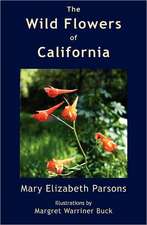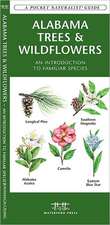White Pine: The Natural and Human History of a Foundational American Tree
Autor John Pastor Ph.D.en Limba Engleză Paperback – 5 ian 2023
Since the clear-cutting era, naturalists, foresters, and scientists have taken up the quest to restore the great white pine forests. White Pine follows this centuries-long endeavor, illuminating how the efforts shaped Americans’ understanding of key scientific ideas, from forest succession to the importance of fire. With his keen naturalist’s eye, Pastor shows us why restoring the vitality of these forests has not been simple: a host of other creatures depend on white pine and white pine depends on them. In weaving together cultural and natural history, White Pine celebrates the way humans are connected to the forest—and to the larger natural world.
Today, white pine forests have begun to recover, but face the growing threat of climate change. White Pine shows us that hope for healthy forests lies in understanding the lessons of history, so that iconic species survive as a touchstone for future generations.
Preț: 166.29 lei
Nou
Puncte Express: 249
Preț estimativ în valută:
31.82€ • 33.02$ • 26.60£
31.82€ • 33.02$ • 26.60£
Carte disponibilă
Livrare economică 22 februarie-08 martie
Preluare comenzi: 021 569.72.76
Specificații
ISBN-13: 9781642831412
ISBN-10: 1642831417
Pagini: 276
Ilustrații: 12 illustrations
Dimensiuni: 152 x 229 x 23 mm
Greutate: 0.3 kg
Editura: Island Press
Colecția Island Press
ISBN-10: 1642831417
Pagini: 276
Ilustrații: 12 illustrations
Dimensiuni: 152 x 229 x 23 mm
Greutate: 0.3 kg
Editura: Island Press
Colecția Island Press
Notă biografică
John Pastor is an ecologist and Professor Emeritus at the University of Minnesota, Duluth, where his teaching and research focused on the natural history and ecology of northern ecosystems. He is the author of What Should a Clever Moose Eat? and Mathematical Ecology of Populations and Ecosystems, is co-editor of Large Mammalian Herbivores, Ecosystem Dynamics, and Conservation, and has authored or coauthored 22 book chapters and over 120 papers, mostly about the North Woods. He is a past co-chair of the Natural History Section of the Ecological Society of America and founding editor of "The Scientific Naturalist" series in the journal Ecology.
Cuprins
Introduction
Chapter 1. The Evolution and Arrival of White Pine
Chapter 2. "A Great Store of Wood and Above All of Pines..."
Chapter 3. A Logger's Paradise
Chapter 4. Thoreau, the Maine Woods, Forest Succession, and Faith in a Seed
Chapter 5. The Watershed
Chapter 6. A Scientific Foundation of White Pine Ecology and Management
Chapter 7. Rusty Pines and Gooseberries
Chapter 8. Roosevelt's Tree Army
Chapter 9. Rebirth by Fire
Chapter 10. Restoring the White Pine
Chapter 11. Climate Change and the Future of White Pine
Afterword
Bibliography
Notes
About the Author
Index
Chapter 1. The Evolution and Arrival of White Pine
Chapter 2. "A Great Store of Wood and Above All of Pines..."
Chapter 3. A Logger's Paradise
Chapter 4. Thoreau, the Maine Woods, Forest Succession, and Faith in a Seed
Chapter 5. The Watershed
Chapter 6. A Scientific Foundation of White Pine Ecology and Management
Chapter 7. Rusty Pines and Gooseberries
Chapter 8. Roosevelt's Tree Army
Chapter 9. Rebirth by Fire
Chapter 10. Restoring the White Pine
Chapter 11. Climate Change and the Future of White Pine
Afterword
Bibliography
Notes
About the Author
Index
Recenzii
"A slim but quite powerful volume."
"Pastor's book, which combines a charming professorial sensibility with the expertise and keen observations of a veteran scientist, is history for a layperson, an introduction to forest ecology, a cautionary tale of reckless natural resource harvesting and a roadmap for sustainable foresting practices to conserve precious woods and enable their flourishing...White Pine's information and reverence for life, as well as the conditions life requires, endow it with value for the layperson, historian and seasoned scientist alike."
“This book contains the rich history of a foundational tree species that has helped sustain life and ecosystem health while shaping a nation. Pastor’s discussion of the fine historical details, such as the Pine Tree Riots, how mean annual increment was created, how white pine blister rust was important for motivating Congress to pass the Plant Quarantine Act, and transition from Indigenous reverence to European exploitation and utilitarianism to modern conservation and sustainability, makes this a must-read for all forestry professionals, naturalists, and others receptive to the teachings of history in pursuit of conserving a legendary tree species and forest ecosystems.”
“White Pine celebrates the tree, the bedrock of northern natural history, the economic scaffolding of a fledgling nation.… Pastor’s story is excellent and extensive.”
“Dr. Pastor’s writing in White Pine wonderfully tells the ecological and cultural importance of white pine. Dr. Pastor keeps the text scientifically appropriate while including touches of humor and informative anecdotes. Readers of all backgrounds interested in natural history, culture, and the cross-section of the two will enjoy this book.”
"White pine, a cultural icon and source of riches to generations, remains an awe-inspiring and yet enigmatic species in forests across eastern North America. Through engaging history, delightful personal narrative, and wide-ranging research, all accented by his wonderfully detailed pen and ink drawings, John Pastor presents the most insightful book yet on one of America’s foundational trees."
"In a beautiful blend of cultural and natural history, White Pine takes us on a journey to deeply know one species. From that depth comes the surprising discovery of all the life connected to it and a hopeful guide for our shared future."
"John Pastor’s wonderfully evocative writing about this iconic American tree is rooted in a lifetime of science and scholarship. It’s as much a deep history of the relationships between humans and nature as it is the story of a tree and its environment."
Descriere
America was built on white pine. From the 1600s through the Civil War and beyond, it was used to build the nation’s ships and houses, barns, and bridges. It became a symbol of independence, adorning the Americans’ flag at Bunker Hill, and an economic engine, generating three times more wealth than the California gold rush. Yet this popularity came at a cost: by the end of the 19th century, clear-cutting had decimated much of America’s white pine forests. In White Pine: The Natural and Human History of a Foundational American Tree, ecologist and writer John Pastor takes readers on walk through history, connecting the white pine forests that remain today to a legacy of destruction and renewal. Weaving together cultural and natural history with a keen naturalist’s eye, Pastor celebrates the way humans are connected to the forest—and to the larger natural world.











